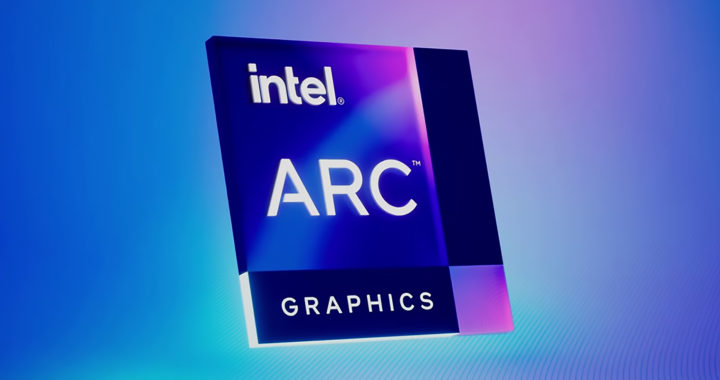The unveiling of Intel Arc in March 2022 marked another milestone for Intel Corporation and a further expansion of its product line. This line of discrete graphics processors competes against the GeForce line of GPUs from Nvidia and the Radeon line from AMD. It is marketed for personal computer gamers, content creators or creative professionals, and developers or institutions working on artificial intelligence workloads. This article provides a generalized review of the advantages and disadvantages of Intel Arc.
A General Review of the Graphics Processor Line from Intel: Advantages and Disadvantages of Intel Arc
Intel Arc was not the first graphics processor from Intel. The chipmaker might be a dominant producer of general-purpose processors or central processing units for personal computers but it has also been providing graphics processing solutions beginning in 1998. The most notable ones were the Intel Graphics Media Accelerator which was first introduced in 2004 and was succeeded by the Intel HD Graphics and Intel Iris.
The Intel Xe Graphics and Intel Xe Max are the main integrated and discrete GPUs from Intel for mainstream consumers. Nevertheless, because of the growing market and demand for high-performance graphics processors, and to challenge the dominance of Nvidia and AMD, Intel has introduced the Intel Arc line. It expands the product portfolio of the company while also maximizing the use of its existing Xe GPU architecture.
Pros: General Advantages of Intel Arc
Intel failed to garner favorable responses from tech reviewers and enthusiasts during the introduction of the first batch of its Arc GPUs. There were several driver and other compatibility issues that drastically affected their performance. However, with the release of software updates, newer feedback has been promising. The following are the selling points and notable advantages of Intel Arc:
1. Diverse Options
The first products under this GPU line are the Intel Arc A-Series which include the A750 and A770. These are consumer-grade graphic processors for desktop and laptop computers. The Intel Arc Pro is a professional-grade sub-line of GPUs while the Intel Arc GPU for the Edge is a dedicated sub-line for dedicated workloads such as AI modeling and media processing. Nevertheless, with the various product offerings under the entire GPU line, Intel casts a wider net to capture the different segments within the greater GPU market.
2. Value For Money
A notable advantage of Intel Arc is a balanced performance-to-price ratio. These GPUs are considered more affordable than alternatives. The A750 had an introductory price of around USD 250.00 while the A770 was priced at USD 329.00 during introduction. There are alternatives from Nvidia and AMD with similar pricing but the Intel Arc equivalents are expected to comfortably outperform them. This makes them decent and more accessible mid-range graphic processors for the mid-range graphics processor segment.
3. Graphics Technologies
Hardware-accelerated ray tracing is another advantage of Intel Arc. This rendering technique simulates the behavior of light to produce more realistic graphical renders. Take note that Nvidia and AMD have also included this feature in their more expensive graphics processors. These GPUs from Intel also support Microsoft DirectX, including Direct3D, for handling tasks related to multimedia and Intel Deep Link Technology for optimizing and improving the seamless load-sharing processes between a compatible Intel Core CPU and an Intel Arc GPU.
Cons: General Disadvantages of Intel Arc
The market for graphic processors has been dominated by Nvidia. The specific GeForce line of GPUs has been the standard when it comes to consumer-grade and professional-grade graphics processing. AMD also has an established footing in the market with its AMD Radeon line on top of its pro-grade AMD Radeon RX sub-line. These companies are the main hurdle to Intel. The following are the specific disadvantages of Intel Arc:
1. Limited Performance
The A770 outperforms the GeForce RTX 3060 by 16 percent in Adobe Premier Pro while costing about half as much. However, when it comes to high-performance gaming and other creative workloads, other mid-range and top-tier GeForce RTX GPUs and even AMD Radeon GPUs tend to perform better. Nvidia has an edge in ray tracing and upscaling technologies while AMD offers a better performance-to-price ratio. Intel Arc also suffers from lower power efficiency and higher heat output which raises overheating concerns.
2. Consistency and Compatibility
Another general disadvantage of Intel Arc GPUs is the consistency of their performance. Some games run well on the A750 and A770 while others, often older ones, perform poorly. This might stem from the fact that these graphic processors are new, the drivers are not mature enough, or that game titles and applications are not yet fully optimized. The XeSS technology of Intel, its own version of deep learning super sampling or DLSS of Nvidia, is also not yet as widely supported. There are also concerns for long-term support.
3. Specific Heating Issue
The heating issue of these GPUs from Intel stems from their lower power efficiency, high idle power consumption, and poor hardware-software optimization. These graphic processors tend to require more heating management or cooling solutions than counterparts from Nvidia. This can add to the total cost of a desktop computer setup or can limit the mobility and usability of laptop computers. Take note that excessive heat can result in overheating and further cause heat-related damage to hardware components.

